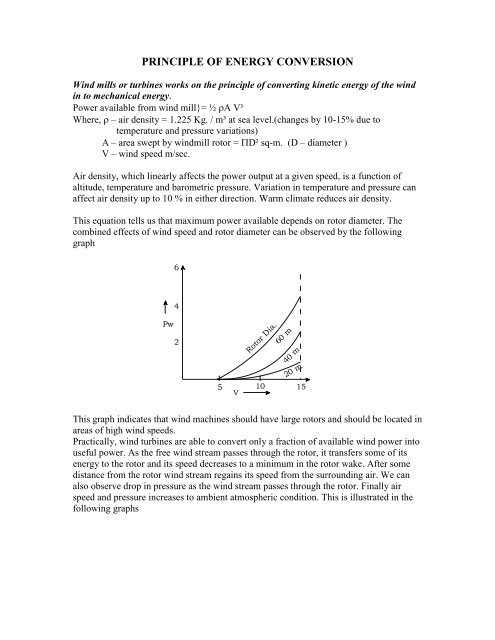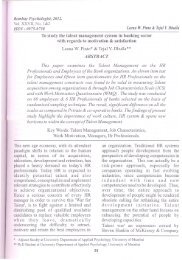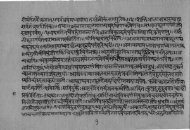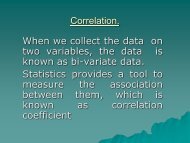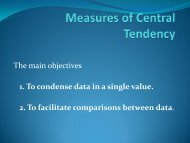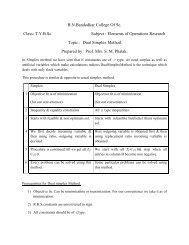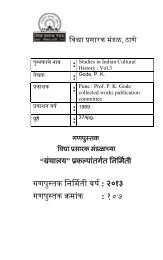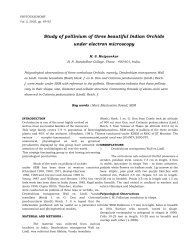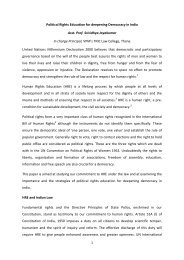WIND POWER GENERATION TECHNOLOGY.pdf
WIND POWER GENERATION TECHNOLOGY.pdf
WIND POWER GENERATION TECHNOLOGY.pdf
You also want an ePaper? Increase the reach of your titles
YUMPU automatically turns print PDFs into web optimized ePapers that Google loves.
PRINCIPLE OF ENERGY CONVERSIONWind mills or turbines works on the principle of converting kinetic energy of the windin to mechanical energy.Power available from wind mill}= ½ A V³Where, – air density = 1.225 Kg. / m³ at sea level.(changes by 10-15% due totemperature and pressure variations)A – area swept by windmill rotor = D² sq-m. (D – diameter )V – wind speed m/sec.Air density, which linearly affects the power output at a given speed, is a function ofaltitude, temperature and barometric pressure. Variation in temperature and pressure canaffect air density up to 10 % in either direction. Warm climate reduces air density.This equation tells us that maximum power available depends on rotor diameter. Thecombined effects of wind speed and rotor diameter can be observed by the followinggraph64Pw2Rotor Dia.60 m40 m20 m5 10 15VThis graph indicates that wind machines should have large rotors and should be located inareas of high wind speeds.Practically, wind turbines are able to convert only a fraction of available wind power intouseful power. As the free wind stream passes through the rotor, it transfers some of itsenergy to the rotor and its speed decreases to a minimum in the rotor wake. After somedistance from the rotor wind stream regains its speed from the surrounding air. We canalso observe drop in pressure as the wind stream passes through the rotor. Finally airspeed and pressure increases to ambient atmospheric condition. This is illustrated in thefollowing graphs


